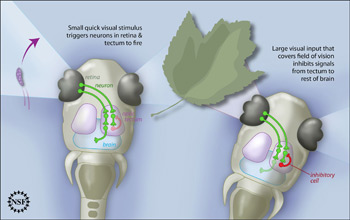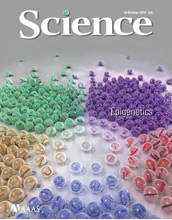All Images
News Release 10-205
The Zebrafish's Neural Circuit Prevents It From Biting Off More Than It Can Chew
Inhibiting certain brain cells sharpens animal's response to small and quick visual stimuli
This material is available primarily for archival purposes. Telephone numbers or other contact information may be out of date; please see current contact information at media contacts.

Small prey-like items elicit a quick response from zebrafish larvae, as excitatory brain cells fire. However, large visual stimulus covering the zebrafish's field of vision fires off inhibitory cells, and the zebrafish responds less to it. This mechanism allows the zebrafish to have a good hunting response to the appropriate visual cues, and not bite off more than it can chew.
Credit: Credit: Zina Deretsky, National Science Foundation
Download the high-resolution JPG version of the image. (157 KB)
Use your mouse to right-click (Mac users may need to Ctrl-click) the link above and choose the option that will save the file or target to your computer.

The researchers' findings are described in the Oct. 29 issue of the journal Science.
Credit: Copyright AAAS 2010
Download the high-resolution JPG version of the image. (245 KB)
Use your mouse to right-click (Mac users may need to Ctrl-click) the link above and choose the option that will save the file or target to your computer.
